Solving production
bottlenecks
Overview
2K Games develops and publishes video games globally. Every asset for every game must be managed, reviewed, and approved before being published.
My Role
◆ Strategy
◆ Research
◆ Product design
◆ Usability testing
Team
◆ Product Manager
◆ UX Researcher
◆ 3 Engineers
◆ Production manager
Challenges
◆ Siloed teams
◆ Project multitasking
Problems to solve
2K was using an antiquated product and broken process to record feedback and approvals of in-game assets. The platform had significant tech and UX debt from years of neglect. It was hindering productivity with low user satisfaction.
Business Objective
Redesign the entire experience to create an efficient process using proprietary software that enhanced overall production and reduced error frequency. This solution became known as LARS or Legal Asset Review System.
User-centered Agile process
Unlike traditional Agile, our user-centered hybrid approach incorporated testing and feedback at every stage of development, including during planning, design iterations, and after each sprint.

Research
We began the design process by getting to know our users and understanding their current workflow. We conducted a heuristic evaluation of the existing product and documented the requirements.
User interviews & surveys
◆ 8 interviews
◆ 26 surveys
◆ 5 screen recordings
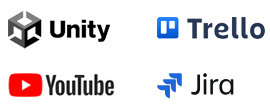
Comparative analysis
◆ Project managment tools
◆ Ticketing systems
◆ Asset Managememnt
◆ Media viewers
◆ Commenting experiences
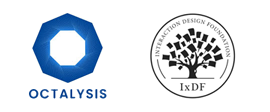
Psychological research
◆ Gamification methods
◆ Cognitive Drift
◆ Content blindness
Audit of current process
We performed a deep dive into the current process to help visualize the pain points and jobs to be done.
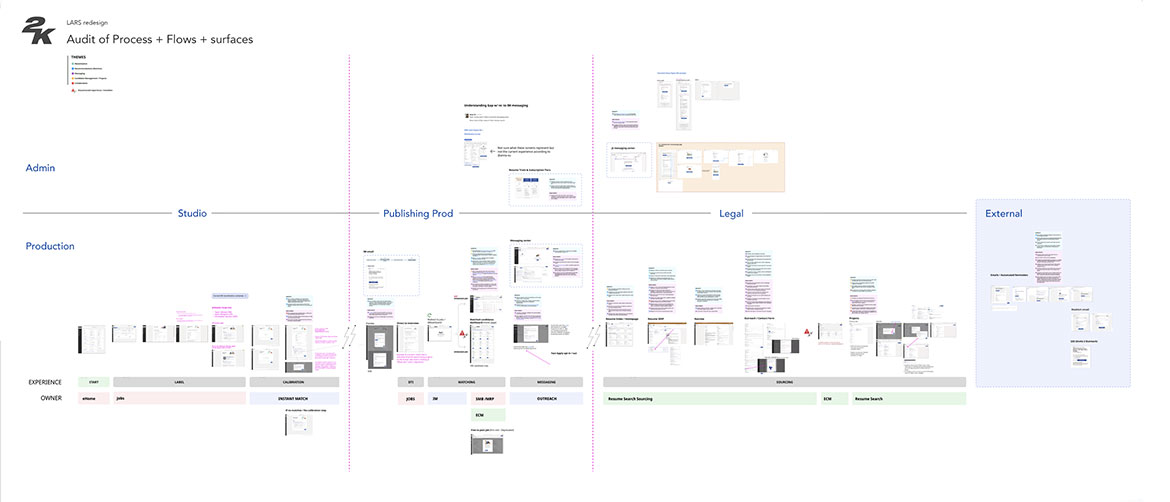
User personas and journey mapping
It was crucial to get to know our users. There were three very distinct user personas to consider. Mapping helped us identify pain points, and uncover opportunities for improving the process and interaction with the product.
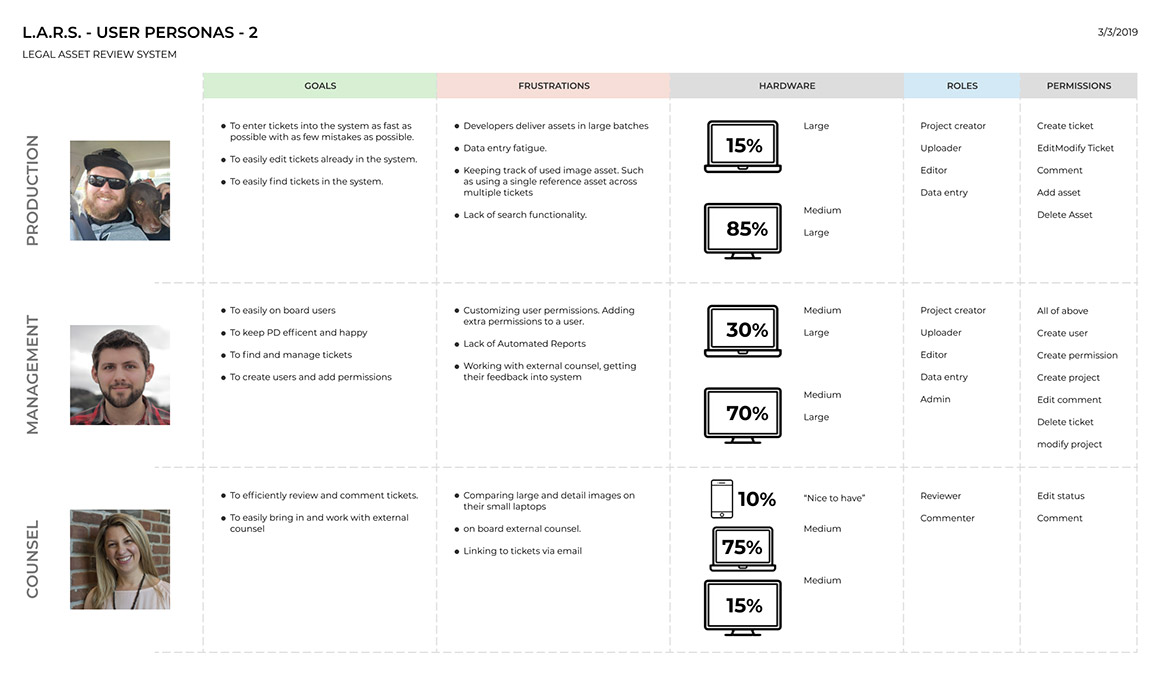
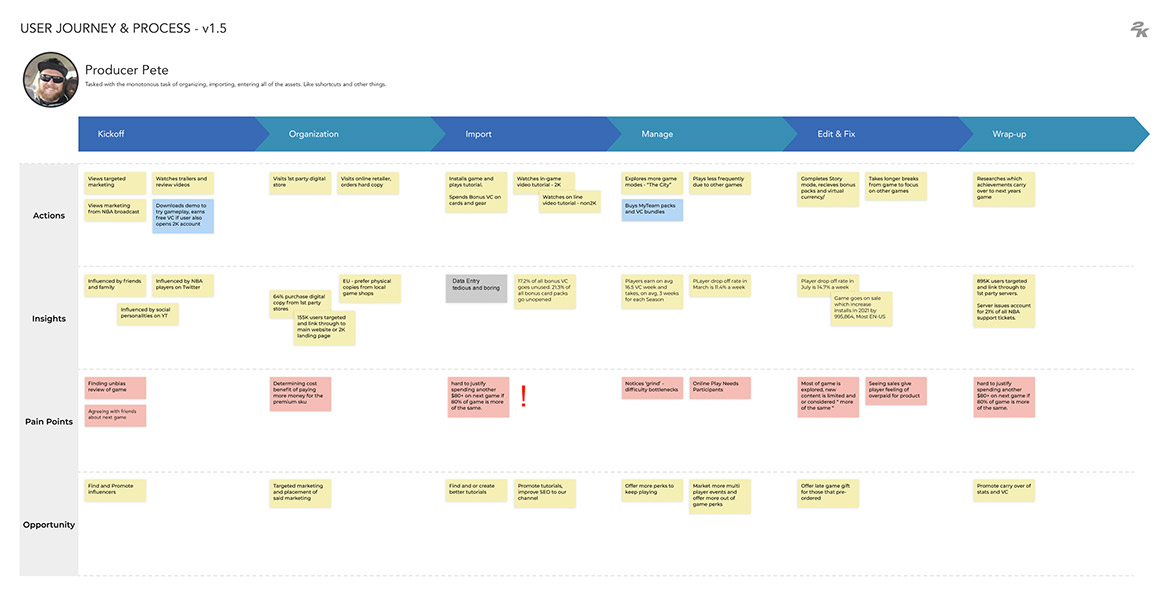
Jobs to be done
JTBD research helped us inform user stories and prioritize features. Within an Agile framework, we felt more confident our solutions addressed our user's needs.
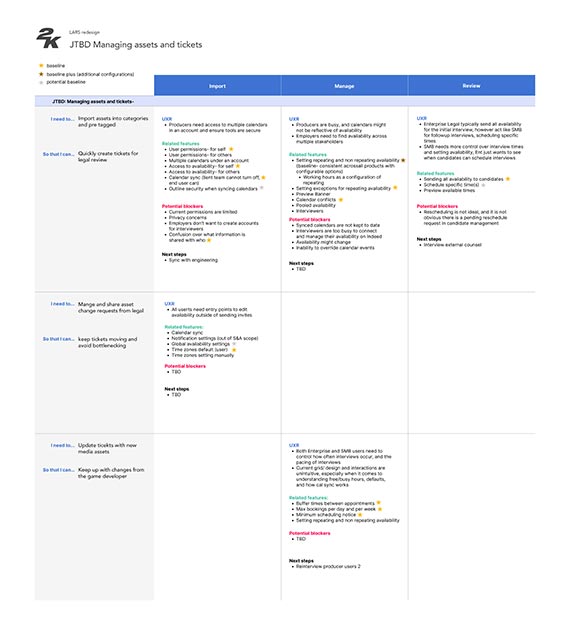
Research learnings
Our analysis revealed many insights and takeaways that provided valuable understanding and direction.
◆ Legal users were unfamiliar with common UI patterns
◆ Siloed teams used different tools
◆ Many tickets would share the same information
◆ Users wanted faster data entry
◆ Intuitive keyboard shortcuts
◆ Batch editing
These discoveries helped define and prioritize the product’s requirements. As well as guided our next step of creating solutions to solve our user's problems.
Ideation
We generated a large quantity of ideas and potential solutions via brainstorming and SCAMPER methods.
User Flows
We studied and explored better solutions for organizing, structuring, and labeling our content. Eventually choosing a ticket system that moved along a Kanban board. We color-coded each stage of the journey, so at a glance, users could readily identify the stage of each ticket.
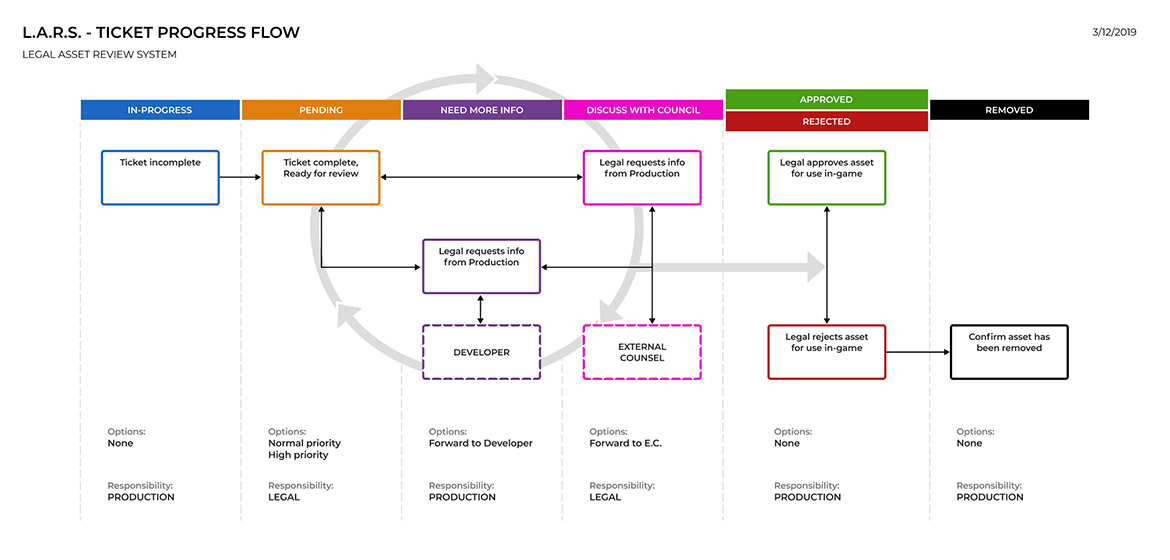
Ticket creation in bulk
Game assets were often delivered in large batches and with accelerated timelines, leading to long hours, fatigue, and errors. Bulk uploading needed a nuanced approach. From the beginning, LARS was built so users could use a .csv file to organize and upload hundreds of assets at a time.
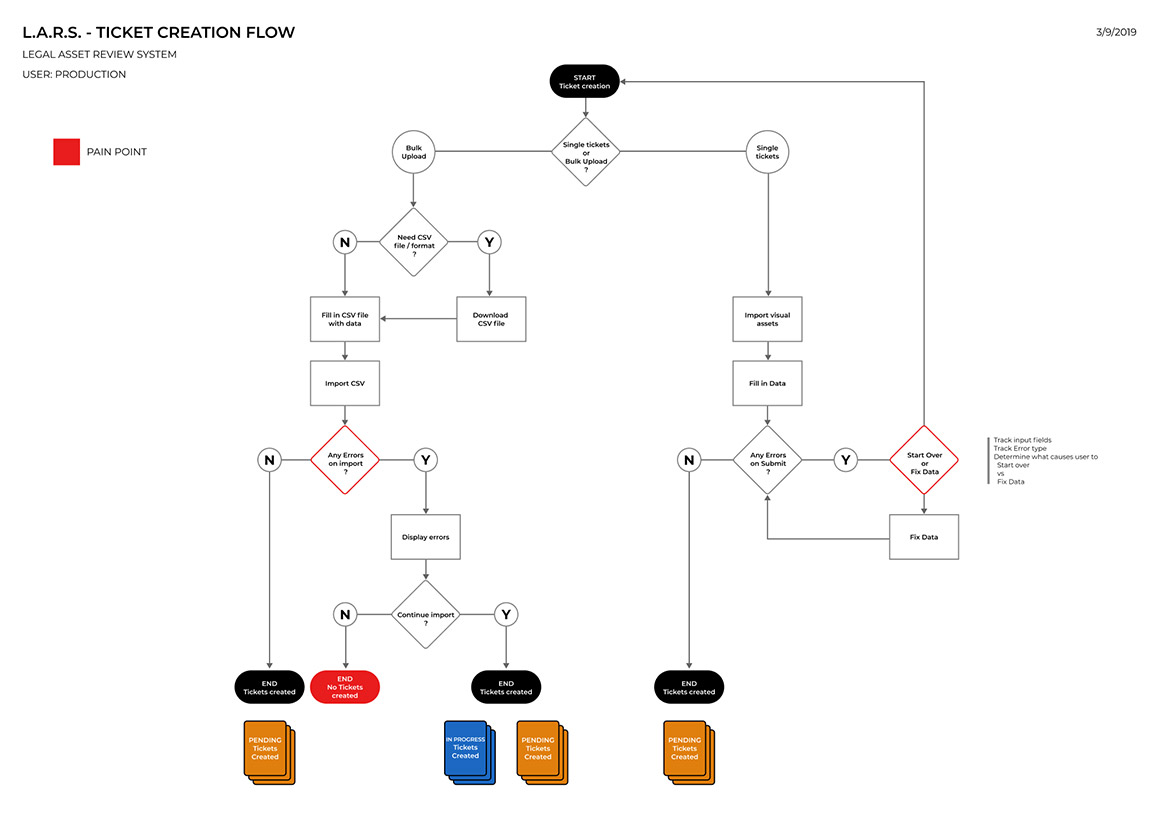
Gamification
Research showed that some users found LARS to be tedious data entry. While UX improvements made it more efficient, gamifying the system had the greatest impact on morale. A leaderboard and leveling system awarded points and reward icons for tasks completed. Managers boosted engagement by organizing competitions with tangible prizes during critical work periods.
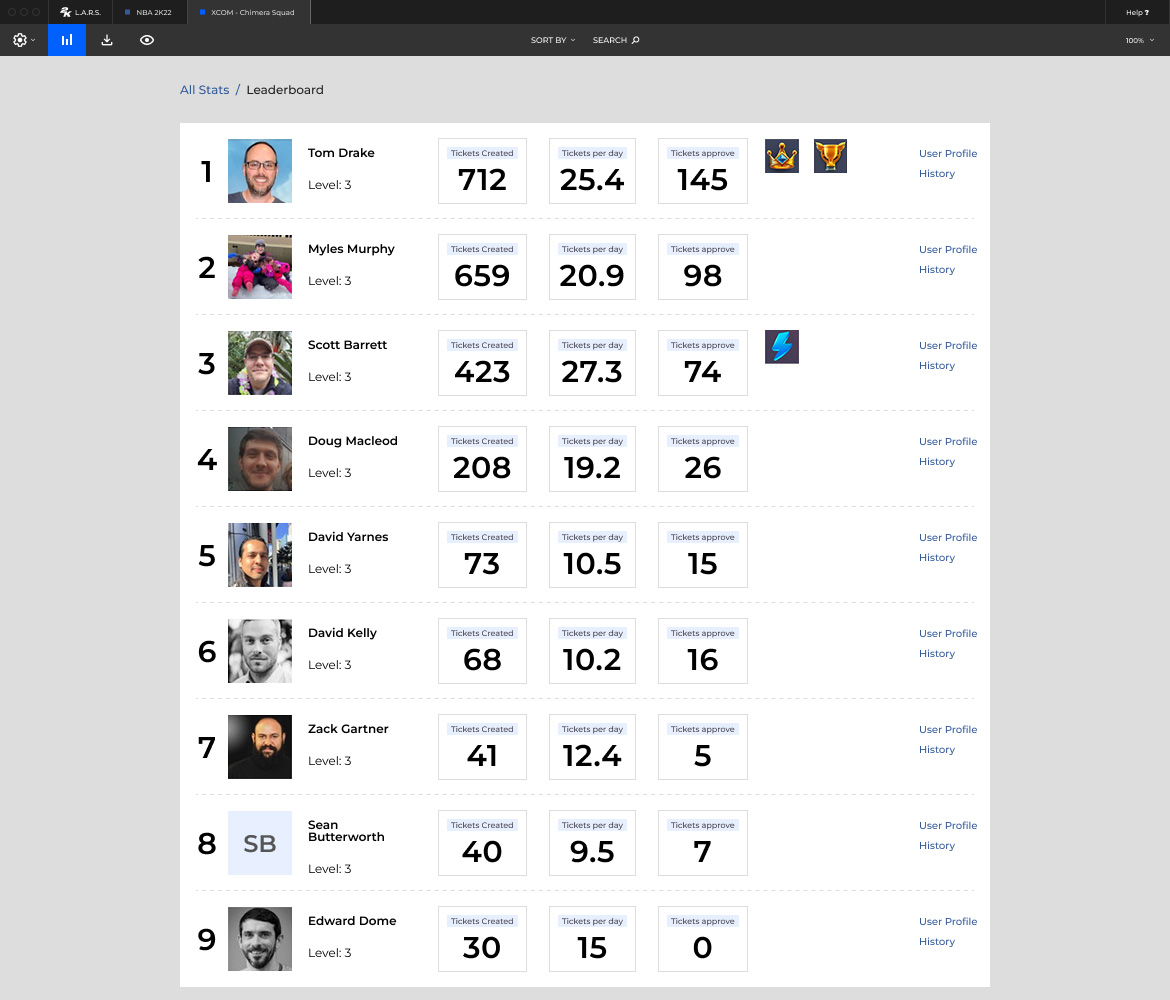
Asset review
Legal users needed to compare game assets with inspiration sources or public domain content, including zooming in on images and videos. To avoid reinventing the wheel, we analyzed popular products to find the best zoom and pan experience that met user needs while staying within time and resource constraints.
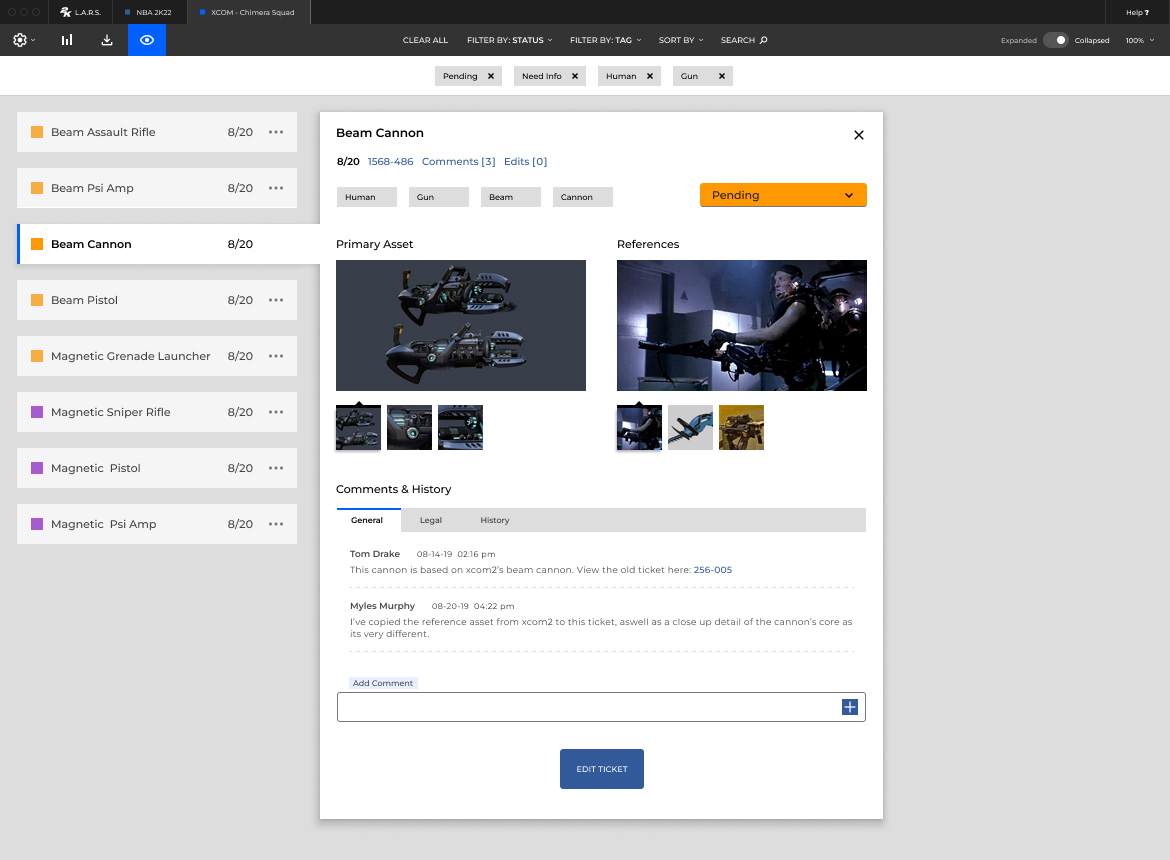
Testing our solutions
We continuously tested features, UI patterns, and user flows to ensure optimal usability. While this was typically done using working software, we also tested with concepts and prototypes. We identified several challenges and issues, the most noteworthy are outlined below.
User fatigue
Research showed that users made the most errors when fatigued working late. To help, we built an import test that flagged specific CSV lines with errors, reducing mistakes.
Yet, production speed and user satisfaction remained low. Further research and testing revealed stopping the import to fix errors felt too restrictive. We pivoted to let users decide how to proceed. This flexibility boosted productivity and user satisfaction.
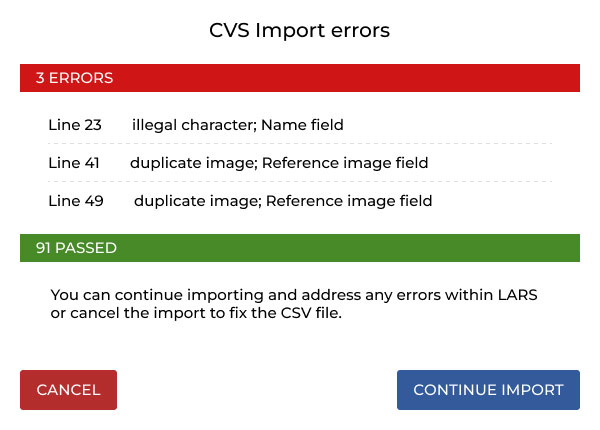
External users
Legal users faced two key challenges: sharing sensitive assets over email with outside counsel and needing a way to highlight specific parts of an asset.
We petitioned IT and engineering to improve access for outside vendors. Then, we designed and tested a feature allowing legal users to pin comments to specific parts of an image, automatically generating a cropped view.
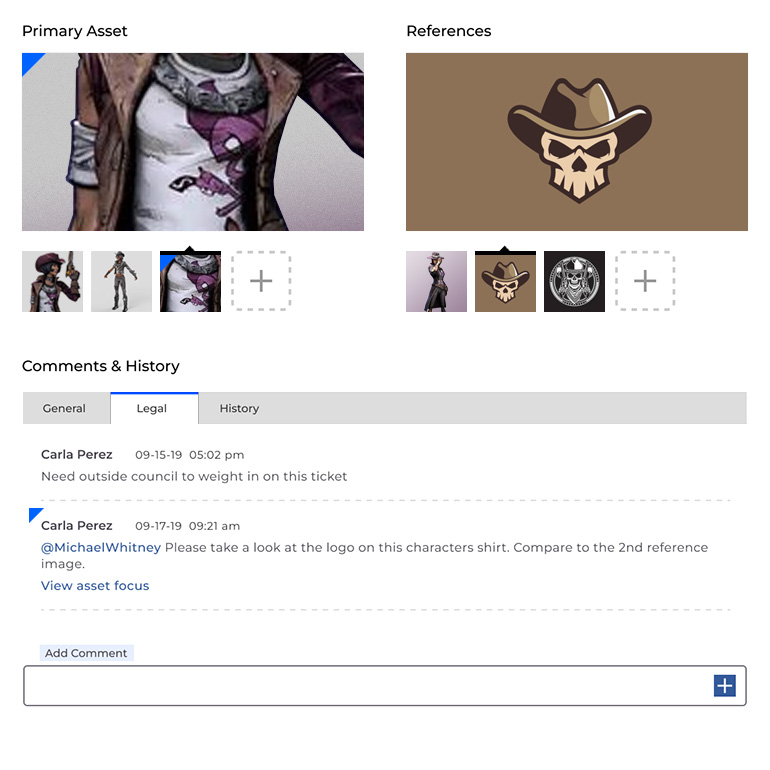
Hawthorne effect
Our product was in beta, being tested with a small but real project. While initial user feedback was overwhelmingly positive, we suspected the Hawthorne effect—where people alter their behavior because they know they're being observed. To get more authentic insights, we conducted a contextual inquiry by joining users during a late-night crunch session. In their natural work environment, users provided significantly different feedback, revealing crucial pain points that weren't evident in earlier testing.
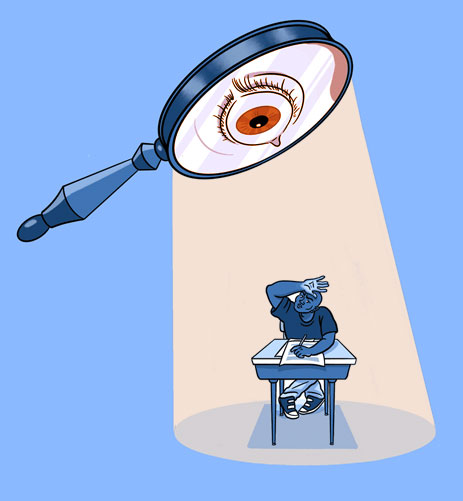
Visual Designs
Here are some of the product's visuals, showcasing the user interface patterns across the platform.
Expanded and filtered view asset tickets
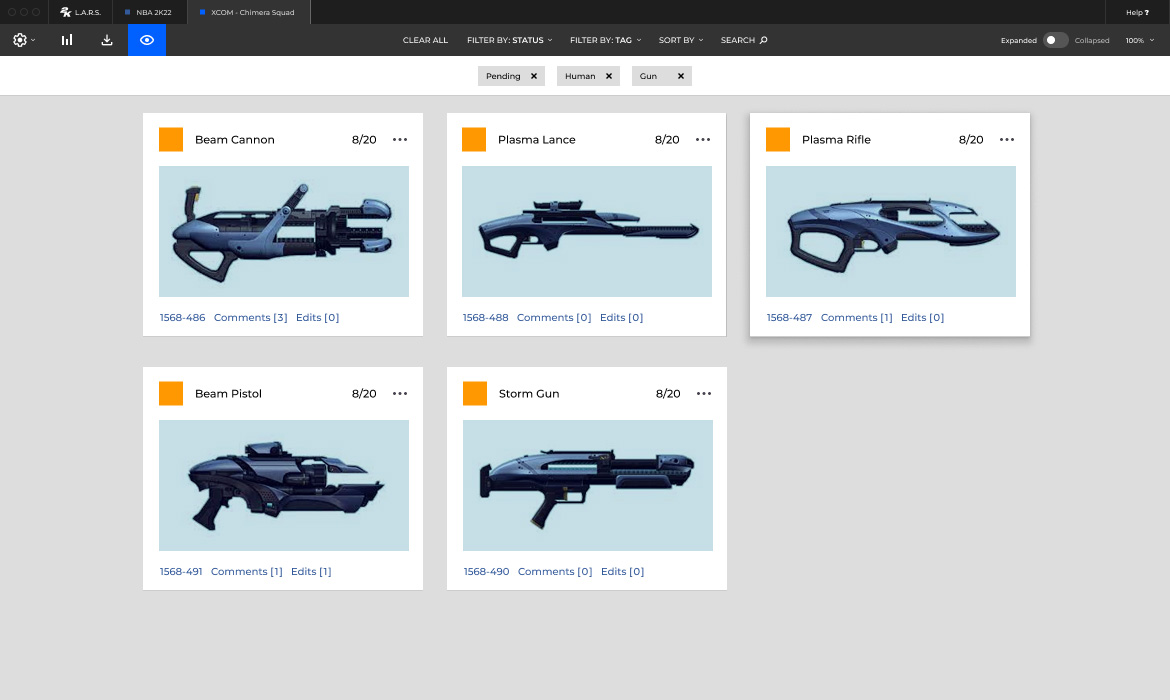
Single ticket creation
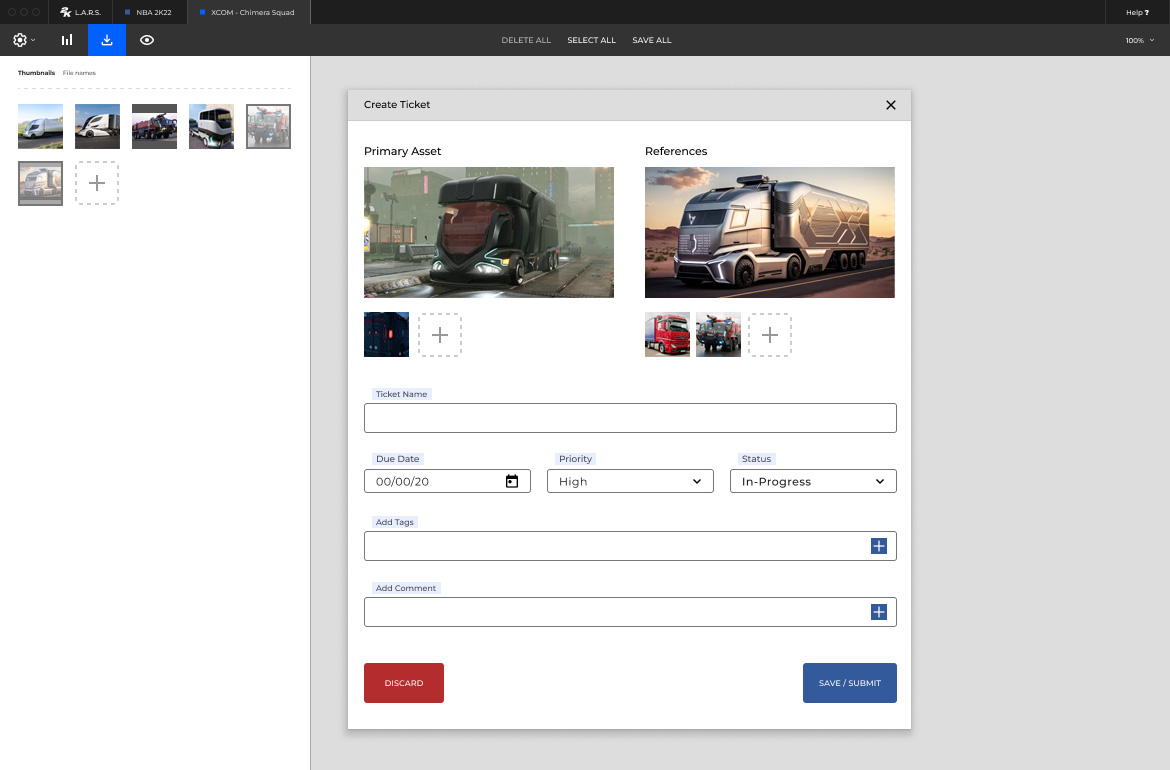
Bulk editing
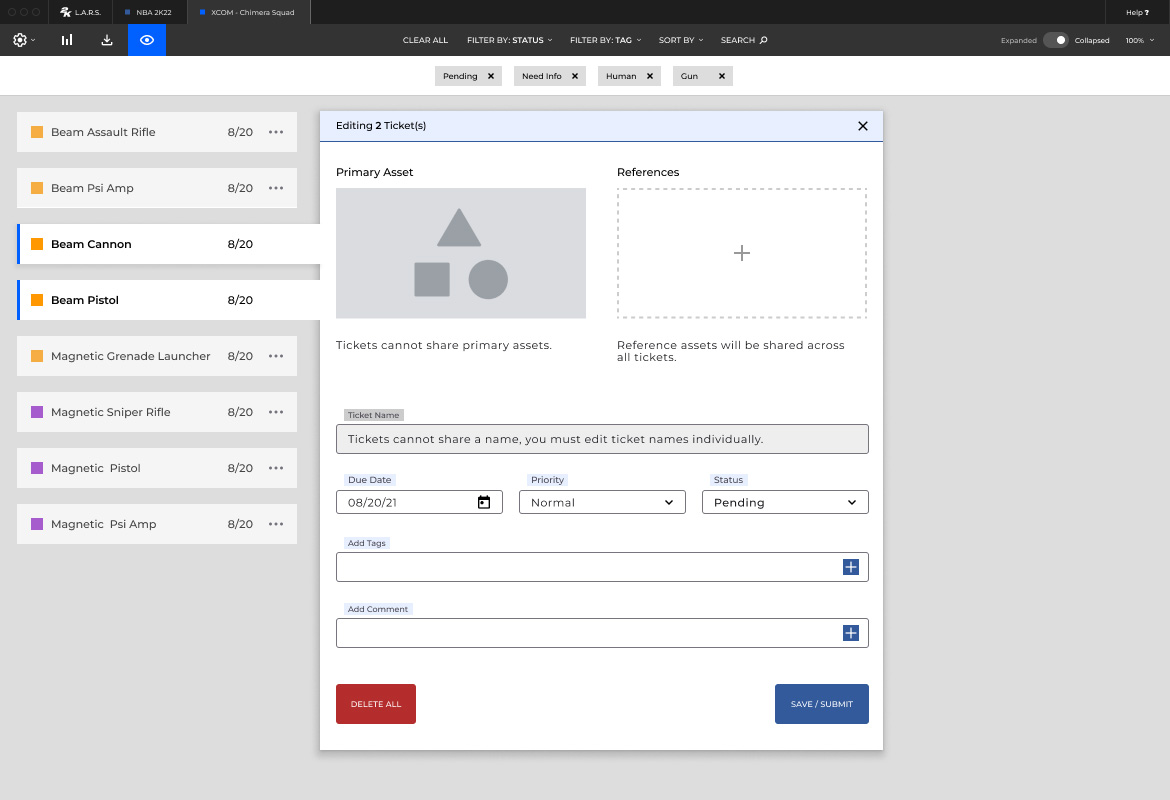
User profile view

Conclusion
LARS was a successful reinvention of an antiquated workflow built on outdated software. User satisfaction increased significantly. Managers reported faster onboarding of new users. Error frequency dropped by 68% and projects are being completed 32% faster.
These improvements have increased the overall efficiency of 2K’s game publishing at large. Teams now have more time to focus on other areas of game production. To date, the software has handled over a 5,00,000 assets and counting.
68%
Error frequency improvement
32%
Production time